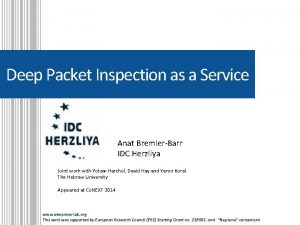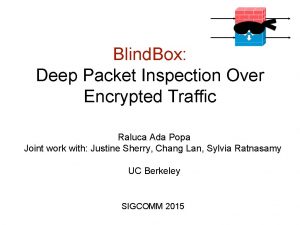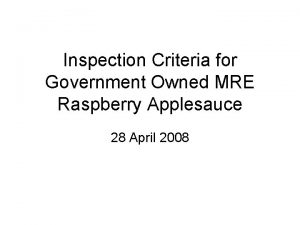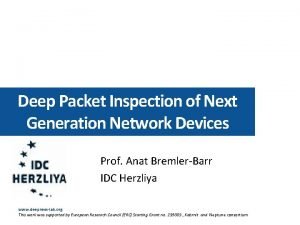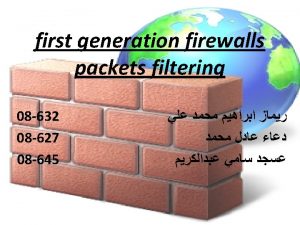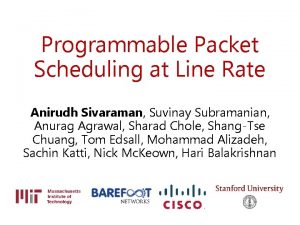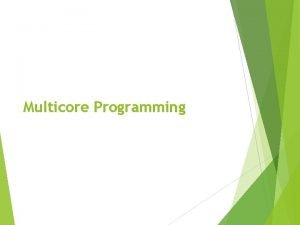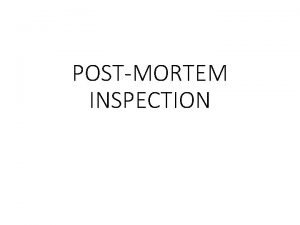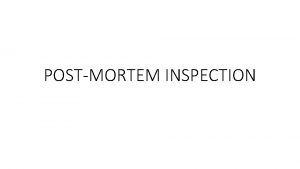Packet Scheduling for Deep Packet Inspection on MultiCore














- Slides: 14

Packet Scheduling for Deep Packet Inspection on Multi-Core Architectures Author: Terry Nelms, Mustaque Ahamad Publisher: ANCS 2010 Presenter: Li-Hsien, Hsu Data: 4/11/2012

packet scheduler The ideal packet scheduler has the following properties: Load Balancing: Work is evenly distributed across all threads. Low Scheduling Overhead: The cost of scheduling packets (in terms of memory and CPU cycles) is very small in comparison to the work performed on the packet. Per-Flow Ordering: Packets on the same flow at egress are in their arrival order. Cache Affinity: Packets are scheduled on threads that have their associated data structures already in cache. Minimal Packet Delay Variation: Minimal variation in the latency added to packets on the same flow. 2

packet scheduler The ideal packet scheduler has the following properties: Load Balancing: Work is evenly distributed across all threads. Low Scheduling Overhead: The cost of scheduling packets (in terms of memory and CPU cycles) is very small in comparison to the work performed on the packet. Per-Flow Ordering: Packets on the same flow at egress are in their arrival order. Cache Affinity: Packets are scheduled on threads that have their associated data structures already in cache. Minimal Packet Delay Variation: Minimal variation in the latency added to packets on the same flow. 3

DPI Packet schedulers Direct Hash (DH)(for comparison purpose) Packet Handoff (PH)(maximize load balancing) Last Flow Bundle (LFB)(maximize cache affinity) 4

Direct Hash (DH) Flow identifier(FID) (the source and destination IP addresses) Hash function (mod) : thread 5

Direct Hash (DH) The advantages of DH is: Cache Affinity: Packets on a flow are always processed by the same thread. The disadvantages of DH is: Load Imbalance There is no control over how packets are distributed. 6

Packet Handoff (PH) Connection table connection queue 1 Connection entry 0 Connection entry Receive queue : packet : thread 7

Packet Handoff (PH) The advantages of PH is: Load Balancing: Threads pull packets from a queue (i. e. from the RQ) when they are not busy. If n threads are processing packets and there at least n packets in the receive queue that map to different connection entries, no threads will be idle. The disadvantages of PH is: Cache Affinity: There is no mapping of packets that are part of the same flow to the same thread. 8

Last Flow Bundle (LFB) FBQ table Flow identifier(FID) (the source and destination IP addresses) Hash function FBQ Receive queue flow bundle queue = FBQ : packet : thread 9

Last Flow Bundle (LFB) The advantages of LFB are: Cache Affinity: Packets that map to the same FBQ and are in the system at the same time are processed by a single thread. The disadvantages of LFB are: Increased Packet Delay Variation: Packets on the same flow are intentionally processed together for improved efficiency. However, this causes packets in a packet train to jump ahead of older packets in the queue resulting in higher latency for those packets. 10

Network Captures 11

12

Latency Results 13

14
 Deep packet inspection architecture
Deep packet inspection architecture Deep packet inspection architecture
Deep packet inspection architecture Deep packet inspection encrypted traffic
Deep packet inspection encrypted traffic Raspberry inspection
Raspberry inspection Http wireshark analysis
Http wireshark analysis Deep packet injection
Deep packet injection Multicore_packet_scheduler
Multicore_packet_scheduler Sjn scheduling
Sjn scheduling Deep pocket inspection
Deep pocket inspection Gandiva: introspective cluster scheduling for deep learning
Gandiva: introspective cluster scheduling for deep learning Stateless packet filter
Stateless packet filter Anirudh sivaraman
Anirudh sivaraman Deep asleep deep asleep it lies
Deep asleep deep asleep it lies Deep forest: towards an alternative to deep neural networks
Deep forest: towards an alternative to deep neural networks 深哉深哉
深哉深哉

